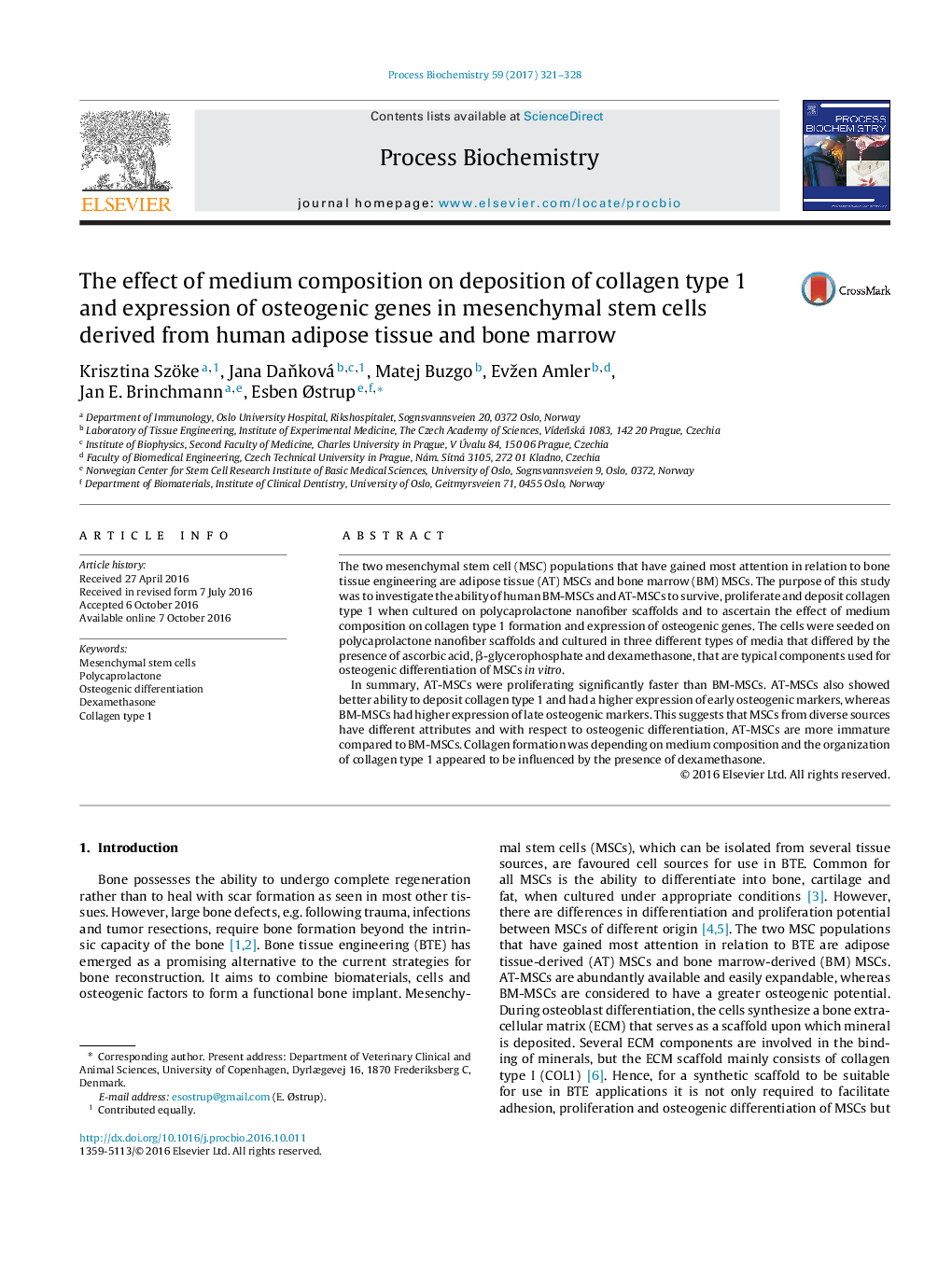| Article ID | Journal | Published Year | Pages | File Type |
|---|---|---|---|---|
| 6452978 | Process Biochemistry | 2017 | 8 Pages |
â¢Polycaprolactone scaffolds supports cell proliferation and extracellular matrix formation.â¢MSCs from adipose tissue form more extracellular collagen than bone marrow MSCs.â¢Dexamethasone influences the organization of collagen in the extracellular matrix.â¢Adipose tissue-derived MSCs appears more immature than bone marrow MSCs along the osteogenic differentiation pathway.
The two mesenchymal stem cell (MSC) populations that have gained most attention in relation to bone tissue engineering are adipose tissue (AT) MSCs and bone marrow (BM) MSCs. The purpose of this study was to investigate the ability of human BM-MSCs and AT-MSCs to survive, proliferate and deposit collagen type 1 when cultured on polycaprolactone nanofiber scaffolds and to ascertain the effect of medium composition on collagen type 1 formation and expression of osteogenic genes. The cells were seeded on polycaprolactone nanofiber scaffolds and cultured in three different types of media that differed by the presence of ascorbic acid, β-glycerophosphate and dexamethasone, that are typical components used for osteogenic differentiation of MSCs in vitro.In summary, AT-MSCs were proliferating significantly faster than BM-MSCs. AT-MSCs also showed better ability to deposit collagen type 1 and had a higher expression of early osteogenic markers, whereas BM-MSCs had higher expression of late osteogenic markers. This suggests that MSCs from diverse sources have different attributes and with respect to osteogenic differentiation, AT-MSCs are more immature compared to BM-MSCs. Collagen formation was depending on medium composition and the organization of collagen type 1 appeared to be influenced by the presence of dexamethasone.
Graphical abstractDownload high-res image (150KB)Download full-size image
